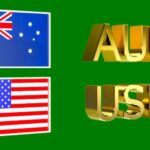The EURUSD currency pair is attempting a fragile recovery, edging up from its weekly lows of 1.1445 to trade near 1.1485 as of Thursday’s European session. However, upside potential remains capped by a resilient US Dollar and persistent risk aversion triggered by fears of a broader conflict in the Middle East.
Mounting geopolitical tensions, especially the threat of direct US involvement in the ongoing Israel-Iran war, are reinforcing the demand for safe-haven assets like the US Dollar. Meanwhile, the Federal Reserve’s hawkish tone continues to underpin the greenback, intensifying pressure on the Euro.
Trump’s Strategic Ambiguity Fuels Market Anxiety
US President Donald Trump’s recent comments suggesting that the US “may or may not” join Israel in military actionhave left global markets unsettled. His refusal to rule out intervention comes amid a Bloomberg report indicating potential US military preparations for the weekend.
The geopolitical rhetoric has heightened the appeal of the US Dollar as investors brace for a possible regional war, further undermining risk-sensitive assets such as the Euro. This backdrop significantly weakens any technical rebound in EUR/USD, even after dipping below the psychological support at 1.1500.
Fed Holds Rates but Warns of Persistent Inflation
At its June meeting, the Federal Reserve left its benchmark rate unchanged at 4.25%–4.50%, aligning with market expectations. However, the policy statement and subsequent remarks by Chair Jerome Powell suggested a more cautious stance toward rate cuts.
While the Fed maintained projections for two 25bps rate cuts in the second half of 2025, Powell emphasized that inflation pressures remain sticky. In particular, he noted that recently implemented tariffs would likely push consumer prices higher, reinforcing the need to remain patient before adjusting policy.
Powell’s Hawkish Tone Reverses Dollar Dip
Markets initially interpreted the Fed’s unchanged policy and unchanged rate-cut path as dovish. The US Dollar weakened momentarily, offering a short-lived boost to EUR/USD. However, Powell’s press conference shifted the tone.
He explicitly warned that inflation could rise again and that the Fed is “well-positioned to wait.” This reasserted the Fed’s cautious stance and quickly helped the Dollar regain strength, dragging EURUSD lower again and cementing bearish sentiment.
US Economic Data Highlights Growth Concerns
In the macroeconomic landscape, recent US indicators have shown signs of a slowdown:
- Initial jobless claims remain elevated, indicating a cooling labor market.
- Construction activity data underperformed expectations, suggesting weakness in fixed investment.
- The Fed revised 2025 GDP growth down to 1.4% (from 1.7% previously), and raised its PCE inflation forecast to 3% (from 2.7%).
Despite these signs of economic fatigue, the Fed is holding off on rate cuts due to upside inflation risks. This paradox—a slowing economy but a hawkish Fed—is complicating the outlook for EURUSD bulls.
Eurozone Inflation Eases, but EURUSD Reacts Little
Meanwhile, in the Eurozone, final CPI data for May confirmed disinflationary trends:
- Headline CPI fell to 1.9% year-on-year from 2.2% in April.
- Core CPI, excluding volatile items like food and energy, dropped to 2.3% from 2.7%.
These figures strengthen the case for further easing by the European Central Bank (ECB), especially given weakening domestic demand. However, the market reaction was minimal—suggesting traders are focused on global risk themes and Fed policy rather than Eurozone data.
Currency Heatmap: EURUSD Holds Ground Against Riskier Peers
According to currency map:
- The Euro outperformed the New Zealand Dollar (+0.81%) and Australian Dollar (+0.63%), both risk-sensitive currencies hit hard by global volatility.
- However, the Euro lost ground to traditional safe-haven currencies like the Swiss Franc (-0.22%) and the US Dollar (-0.02%).
- Against the British Pound, EUR was marginally weaker (-0.10%), reflecting relative resilience in GBP despite risk aversion.
This divergence reflects a broader risk-off trend, where riskier assets are punished, while the USD, CHF, and JPY see inflows.
Low Liquidity Expected as US Market Closes
Thursday’s trading session is expected to be quieter during US hours due to bank holidays. With no major US economic releases scheduled and only a few ECB speakers on the docket, trading volumes may thin out.
This environment favors range-bound price action, unless there is a fresh geopolitical headline that reignites volatility.
Conclusion: EURUSD Faces a Wall of Resistance
EURUSD has shown some signs of life, rebounding slightly from its weekly lows. But any sustained recovery appears elusive given the prevailing risk-averse sentiment, the strength of the US Dollar, and continued Fed hawkishness.
With escalating conflict in the Middle East and uncertainty surrounding US intervention, traders are likely to favor safe-haven trades. The Euro remains vulnerable, especially if geopolitical risks intensify or if the Fed doubles down on its cautious stance.
Unless we see a de-escalation in geopolitical tensions or a significant dovish shift from the Fed, EURUSD may continue to test lower support zonespotentially eyeing the 1.1400 level next.
[faq-schema id=”40025″]









